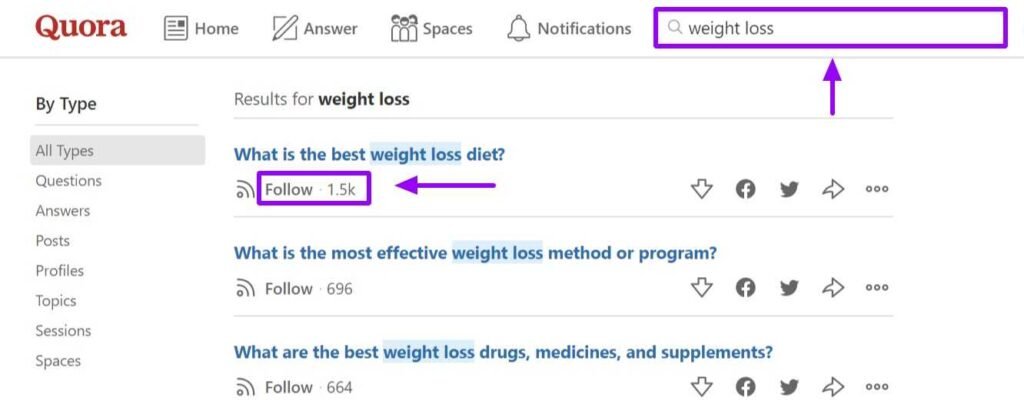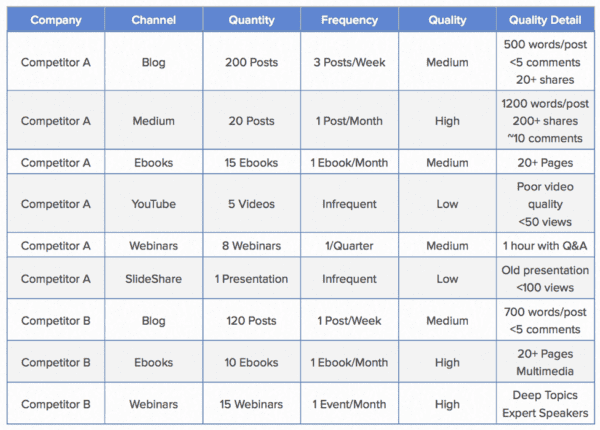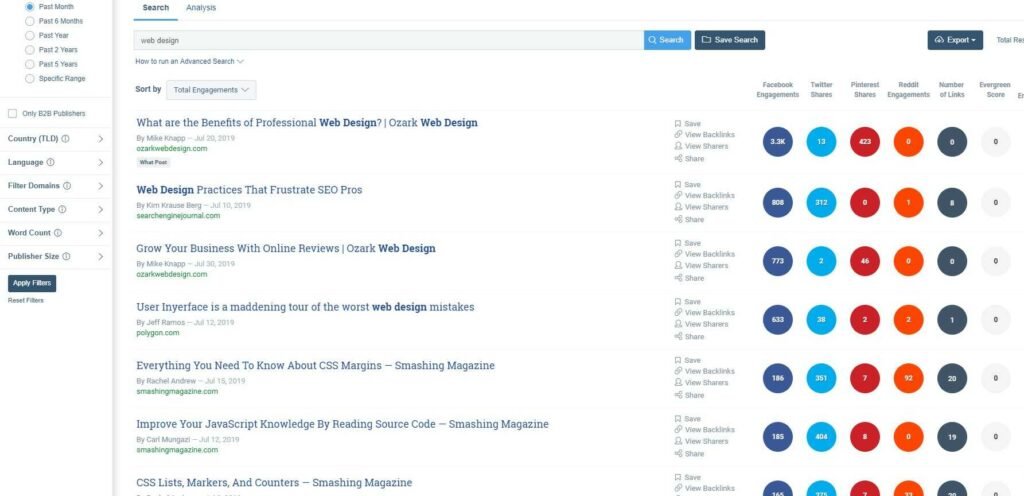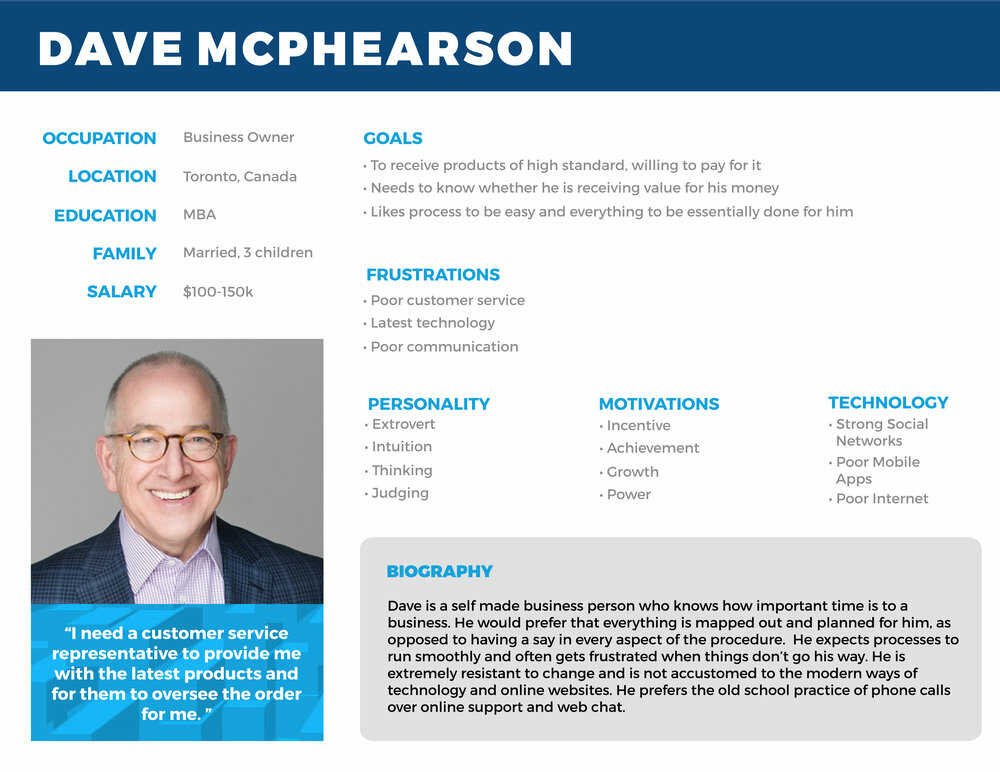A business aims at selling maximum products. But when it comes to choosing its target customer segment, it is often picky. And it should be.
Your ability to understand and meet the needs of your target audience is how you capture their interest and create value.
Knowing your target audience also helps minimize selling costs, improve promotional activities, and grow earnings.
In this article, we’ll walk you through what is a target market, and how to identify and evaluate yours. Also, you’ll learn how to put this knowledge to use when building content. Let’s get straight to it.
What is a target market?
Let’s start with the definition of target market. A target market is a set of people who might be inclined to purchase from a business.
People in your core audience may have similar attributes in terms of gender, race, age, and earnings. And this affects their purchase behavior. When defining your core audience, you include the following data:
Basic demographics
Basic demographics can have a notable impact on customers’ buying choices. A few demographics that can be taken into account when determining the target audience are:
- Earnings
- Profession
- Age
- Gender
- Marital status
- Race
- Academic qualification
Although a company may use one of these characteristics to determine its target market, it’s more typical to consider several attributes.
Let’s take a target market example. Consider a company that deals in premium cars. So focusing on car lovers earning a specific amount of money would be more well-thought for the company than targeting all car lovers.
The concept is that such customers may be more interested in making luxury purchases.
Geographic location
One of the crucial elements when deciding your corporation’s target market is geographic location.
Factors like where consumers reside also impact whether the given good is useful or attainable.
In another target market example, assume a company operates a regional shop and deals in sports gear. There is a possibility that it considers the people living within its commuting radius to be its target audience.
Psychographic traits
A customer’s character, preferences, habits, and beliefs are part of their psychographic traits. By recognizing these characteristics, you can attract customers who are more likely to purchase your goods.
Let’s consider an example where you deal in organic products. In this case, you might aim at customers who are into environmental well-being.
Why analyze your target audience?
Now that you know what is a target market, it’s important to identify your target market because by having a deep understanding of the people in your market, you’ll be able to:
Foster customer satisfaction
Once a business recognizes its potential customers, it can make items that match their liking.
A sports apparel company, for example, might conduct a research survey for its target market to discover the latest ways to sell.
If the company discovers that customers want apparel with particular patterns, it can develop goods to meet this market need.
Similarly, you can generate content that appeals directly to their needs and pain points, making them more likely to buy your product or service.
Improve the efficiency of advertising efforts
Determining your target market allows you to carry out better promotions. You can make sure your communication appeals to potential customers and persuades them to buy.
Additionally, you may figure out which marketing mediums will most likely provide better outcomes.
For example, if young adults are part of your target market definition, advertising on social media may be more reasonable than outdoor advertising.
You also cut down marketing costs since you’ll be running manageable, focused campaigns.
Receive a better ROI
Firms focusing on their target markets are generally more successful at gaining new consumers and bonding with existing ones.
In addition to growth in earnings, improvement in promotional activities allows businesses to cut down on costs and raise total revenue.
Your content and campaigns will build trust and foster relationships, increasing word-of-mouth.
In other words, knowing who your target audience is, the challenges they face, and what your product or service does to help will let you take a personalized approach.
How to research your target market?
Researching your target market gives you valuable insights to create buyer personas for your audience segments.
There are various techniques to find out more about your consumers’ lives, recognize their issues, and understand them completely. Let’s discuss the strategies that have the most chance of working for you.
Know the brand inside out
If you know the business/product you are writing content for in-depth, your path is set. But if not, you’ll have to get this out of the way first.
It’s dangerous to start marketing for a business you have little understanding of. It can limit you in a number of ways.
- You can miss out on a potential target market
- The quality of your content would not be as good
- You won’t be able to fully convey the value of your product/service.
Your advertising messages and content have to connect the dots between your product/services and end consumers. And that requires you to increase mastery of your product or service.
In other words, you need to be clear on the brand first. If the business you plan to write content for hasn’t done that already, they must first establish and document their brand identity and personality.

Once the company is clear on who they are, what they value, and how they add value in the marketplace, only then does it make sense to work on identifying and refining their audience.
If the brand you’re writing for has these things figured out already, here’s how you can learn more:
- Test-drive the product or service yourself. Take it for a spin.
- Read the company’s website and go over the essential pages.
- Get information from subject matter experts within the company.
While all your content won’t be only about the product or service offered by the brand, having a clear understanding will still help. It’ll get easier to come up with ideas for even the non-promotional content.
You’ll be able to strike the right balance between plugging your business and just creating selfless content for the sake of helping your target market.
Audience surveys
Surveys can be really effective in gaining useful insights, but only when you have a plan, to begin with. You need to be clear on:
- The goals of your survey – what exactly do you hope to know?
- Who will you survey – customers, social media followers, leads, etc
- How will you reach those people – email list, advertising, social media, etc
Once you have a concrete survey strategy in place, there are a number of tools you can use to help with setting up and distributing your survey. Some of the well-known ones are Google Forms, Survey Monkey, and Typeform.
Also, remember that it can be challenging to reach out to and get people to fill out your survey. So consider offering an incentive to get more responses to your survey.
Audience interviews
Having one on one conversations with people in your target audience can provide benefits that simply can’t be achieved with other methods. There are often blind spots you won’t have considered on your own.
When you actually talk to someone in your audience, problems and uses you didn’t know will come into the picture.
Your personas (covered in the next section) will be more authentic and accurate. And you’ll be able to create content that your target audience will just eat up. Here’s a great article on the process you can follow to conduct these interviews.
Social networks
Social media websites like Facebook, Twitter, and LinkedIn are a goldmine for audience data. And they all offer some type of analytics solution to get more information about your niche market.
Facebook Audience Insights, for instance, is a powerful marketing analytics tool available. It gives you aggregated information about two groups of people:
- People connected to your Page
- All the people on Facebook
So you can easily find more people like the ones in your current audience. Here’s how it typically looks like.

The left part allows you to select the audience attributes you already know and the right part shows you the data.
There is also a demographics overview which lets you see details like age, gender breakdowns, education levels, job titles, relationship statuses, and more.
Forums and QAs
Another great way to find out what your target audience is like and what is troubling them is through online communities and forums. This is where people connect on shared interests and discuss their problems and solutions.
We live in an era where public conversations are going on about almost all the topics.
Based on your brand’s area of interest, you can find dozens of relevant Facebook groups, subreddits, Quora communities, Twitter threads, and niche forums.
Let’s take Quora, for example. It’s a website where people come together to ask and answer questions on anything that strikes their curiosity.
It is one of the most high-traffic platforms on the web and is full of questions covering a wide spectrum of topics. It also has a great interface to quickly skim through a lot of questions on a given topic.

Just type your topic in Quora’s search bar and it’ll present you with relevant questions. Another awesome thing is it also shows how many people are following a question, indicating how important it is for your target audience.
Moreover, by looking at the answers which got the most upvotes, you can get all sorts of data on what type of content your target market values and how they communicate.
Competitor analysis
Looking at the high-performing content your competitors are writing and sharing can also give you a wealth of data on who your audiences are and what they want.

In addition, there is a wealth of information hidden in customer reviews on your competitors:
- If you sell a digital product, check reviews on websites like Product Hunt, Capterra, G2, and GetApp.
- If it’s a physical product, look at websites like Amazon, Consumer Reports, and Consumer Search for reviews.
- To find reviews on service providers, sites like Clutch, GoodFirms, and AgencyList are great.
Remember, your own customer reviews are not enough to get holistic data in your target audience. Including competitor reviews in your analysis gives you even more advantage.
Keyword research
71% of marketing professionals have cited strategic keyword research as their most effective tactic for SEO. What better way to learn more about your potential customer than to be able to see what they are searching for?
Keyword research allows you to know the common questions and phrases they use, which are also relevant to your brand.
All you need are one or more seed keywords, and to run them through a keyword research tool.

Most keyword research tools show useful statistics like search volume, SEO difficulty, PPC competition, and the top content ranking for those keywords.
If you don’t have the budget for a premium keyword tool, there are several free options available to use.
Content performance analysis
What if you could see real, concrete data on what type of content has performed the best with your target market in the past? That would be a jackpot, right?
Thankfully, there are tools these days that make it easy to gather information on what topics or formats have been successful. One such tool is BuzzSumo. Once you enter a seed topic in BuzzSumo, it shows a list of content on that topic, along with the social media engagement and number of backlinks it has. In fact, you can identify the actual people who shared or mentioned that topic on social media.
For example, let’s say you are a web design company. When you search for the term “web design” in BuzzSumo, you see the most popular content on that topic and how it’s performing on major social networks.

These insights are just the tip of the iceberg. With BuzzSumo’s paid plan, you can go even deeper to understand things like which content types and lengths got the most engagement and more.
Creating buyer personas
Once you’ve dug deeper into who your target audience is from the various market research methods I outlined above, the next step is to build an audience persona. It’s also referred to as a customer persona, buyer persona, target persona or user persona. All these terms essentially mean the same thing.
This is just a fancy of saying you need to create a fictional person who carries the attributes of someone in your target market definition.
This is done with the help of data you accumulated when you conducted the research I mentioned in the previous step. Here’s an example of what a customer persona might look like:

Bonus Tip: You’ll need a separate persona for each of your audience segments. For example, let’s say you’re selling some kind of business marketing software.
And you have identified 3 target segments: product managers, marketing managers, and PR executives. So you’ll need to create individual personas for all three.
As you might have noticed, a persona consists of two major types of data about your target market:

Image Source: Branding Compass
Demographic Data
This refers to the quantifiable characteristics of your ideal prospect or customer. You’re basically answering the question: Who are they?
- Age
- Gender
- Race/Ethnicity
- Location
- Religion
- Education
- Profession & Income
- Marital Status
- Family Size
- Company Size (For B2B audience)
- Industry (For B2B audience)
- Business Lifecycle (For B2B audience)
Example: 30+ agency owner in London, UK. Has a college degree in web design. Small agency with less than 10 employees.
Psychographic Data
This refers to the character and lifestyle traits of your target market. This is where you really get to know your persona on a personal level.
You figure out their buying habits, personal quirks, behavioral nuances, pet peeves, interests, problems, motivations, favorite activities/websites, and more: What’s a typical day like for them?
Try to pinpoint how they work, when they read content, and what type of situations and decisions they deal with. What are their problems/frustrations?
Figure the pain points hindering them every day. Describe the barriers in their personal and professional life. What matters the most to them?
Explain what they value the most, especially in their decision to purchase the kind of product or service you sell. What are their short term and long term objectives?
This will help you understand where your business fits into what they want and how to get them there. What are their trusted sources of information?
What is their research process? Who are their friends and mentors? Which websites do they read or spend a lot of time browsing? What objections could make them reject your offering?
Identify the negative aspects of your brand, or the weaknesses which may drive prospects away. What type of content appeals the most to them?
Most importantly, you are trying to figure out the content they are the most likely to engage with.
Having solid answers to these questions will really help in shaping your personas into something concrete. So try to get as detailed as possible when creating each of your personas. If you need more help, check out the Make My Persona tool from Hubspot.
Conclusion
Understanding what is a target market and researching doesn’t have to be a complicated, tedious undertaking. It’s also a never-ending process. It’s not something you do once and then put in the attic for years.
Review your audience from time to time to see if their content needs have changed and adjust your content strategy accordingly.
Whether you’re a startup or a fully established business, what matters is to have a reliable system in place to keep tabs on your target audience at all times.
Did we miss anything? Did you try these tips? Do you have any questions or comments? Share your thoughts below in the comments section.


